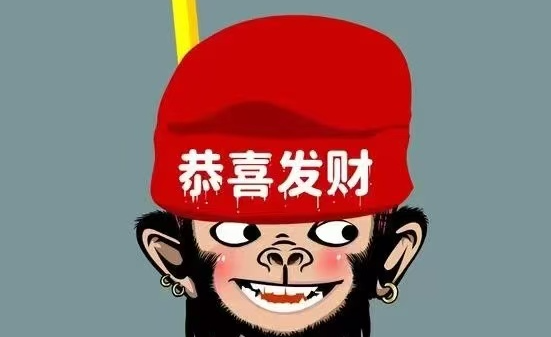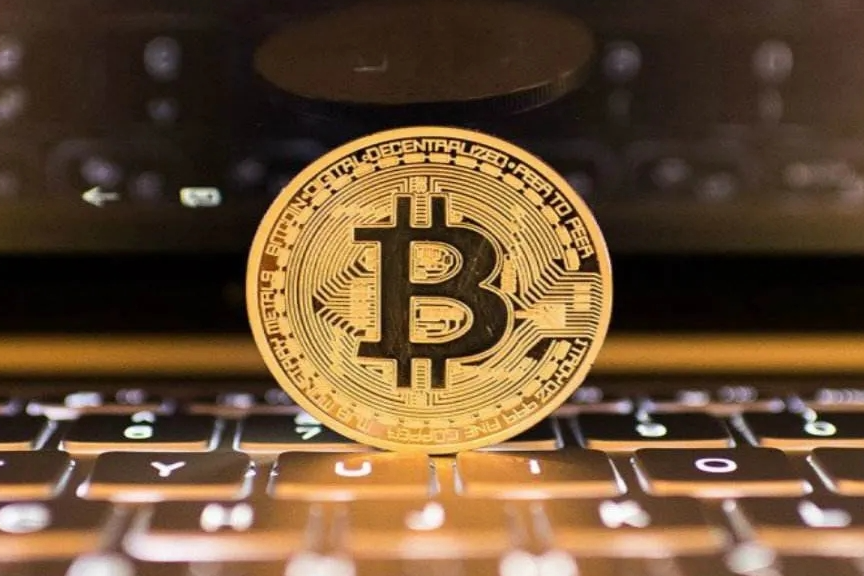| The true wealth code in crypto is rational thinking, systematic methods, and continuous learning.
 Introduction
Introduction
In the 24/7 global financial market of cryptocurrency, ordinary people can achieve financial freedom overnight, but they can also lose everything in an instant. Over the past year, the MEME market has witnessed countless myths of thousands or even tens of thousands of times returns, but in this world full of opportunities and risks, what kind of person can truly grasp the wealth code?
Today, we have invited a guest whose achievements are well-known but who remains very low-key. He was once a programmer at ByteDance and is now a full-time on-chain trader with substantial crypto assets. More importantly, his name is quite special—"Calm, Calm, Stay Calm."
In the highly emotional market of crypto, what do rationality and calmness really mean? What kind of mental journey is required to transition from a speculative mindset to a trading mindset? When the wild fluctuations of MEME coins test everyone's psychological endurance, what kind of trading philosophy can help a person stay clear-headed amidst the volatility?
Let us step into the world of this mysterious trader and explore his wealth code and trading philosophy.
In this episode, the friends from OKX are in conversation with our guest: Calm Calm Stay Calm, interviewer: Mercy, welcome everyone to follow along~
Chapter 1: From ByteDance Programmer to On-Chain Trader
Mercy: Could you please start with a brief self-introduction?
Calm: Hello everyone, I am Calm. Friends who play on-chain should know me to some extent. I created an ENS address name "Calm Calm Stay Calm" while playing with Ethereum NFTs. I’ve somewhat forgotten why I chose this name; perhaps it was because I was too caught up in buying too many Pi Xiu and withdrawing liquidity at that time, and I wanted to calm myself down. Many people followed me on Twitter through my address.
Along the way, I have achieved decent returns on many coins on-chain, and during last year's Solana MEME market, I became one of the leading players.
Mercy: You mentioned on Twitter that you previously worked at ByteDance. What prompted you to enter the crypto space?
Calm: I got into crypto during the peak of the 2021 bull market while I was still working at ByteDance. I heard some stories of people getting rich in crypto from conversations with colleagues. At that time, I had just bought a house and was under financial pressure, so I was eager to participate and asked my colleagues to add me to a few trading groups.
I never imagined that I would later quit my job to trade crypto and even achieve financial freedom. I just saw it as a trading opportunity and wanted to explore whether I could make money. So, I started getting involved in the crypto space alongside my daily work. Although I wasn't full-time, I participated in most of the hot topics on-chain over the past two to three years, including NFTs, Ethereum MEME, and the Solana MEME that started last year.
During this process, I transitioned from a novice to a more experienced on-chain player, but I also missed many opportunities because I couldn't trade full-time. To be honest, there were quite a few opportunities for ordinary users to make money on-chain in the past few years.
Mercy: What ultimately made you decide to quit ByteDance and enter the crypto space full-time?
Calm: I decided to quit ByteDance to trade crypto full-time mainly because the market was too good in the second half of last year, and I found it hard to balance both. During that time, I often had to wake up at 4-5 AM to monitor the market and then go to work at around 9 AM. After returning home, I would sit in front of the computer for another one to two hours trading crypto, then go to bed around 10 PM. I felt extremely exhausted.
My friends often asked me when I would quit my job because during that time, the profits from a single Dogecoin trade could exceed my annual salary. However, I felt that even though I was making some money, I wasn't entirely comfortable quitting, especially since my Web2 salary was still quite good.
The turning point that made me decide to quit ByteDance and join the crypto space full-time was in November last year when I encountered PNUT. I had always liked this narrative and researched its market cap ranking in the spot MEME market, discovering it was second or third to last, with narratives and popularity below it being far inferior.
I judged that buying it had a high safety margin, and the possibility of a significant loss was very low, so I heavily invested. I sold about 20 BTC and bought in completely.
What happened next is well-known; the next day, Musk tweeted that PNUT, this MEME coin, saved America. Such direct mentions of MEME coins in tweets are quite rare. I remember the market sentiment was also very good, and it skyrocketed from over 300 million to around 1.5 billion, and then after another night, it reached 2.5 billion, which meant I could have made about seven times my investment. I later sold out when it dropped to 1.8 billion, but I made my first big profit, and with that capital, I quit my job to enter the crypto space full-time.
Mercy: How do you think your work experience at ByteDance has influenced your subsequent full-time on-chain trading?
Calm: When I worked at ByteDance, I was a programmer, and I also studied computer science. I think a significant influence is that my English is quite good, and I can quickly understand technology and narratives, which helps me grasp trading habits more rationally and not be easily swayed by others.
Mercy: How is full-time on-chain trading different from working at a big company?
Calm: There’s no going back, really. I love a line from a song in the California Hotel: "You can check out anytime you like, but you can never leave." Once you get used to the tense yet free life of crypto, it’s hard to return to a routine life. Especially from the second half of last year until the time Trump launched his coin, the adrenaline rush from being on-chain every day made many other things seem dull. The significant difference between full-time on-chain trading and working at a big company is that you are entirely responsible for yourself; your income and future are entirely in your hands, not in the boss's.
So, when the market is good, it can be more intense, but the difficulty and amount of making money in the crypto market can vary drastically. I think it’s entirely voluntary. After getting up, I feel excited to sit in front of the computer and see if there are any opportunities, and I might sit there all day with very little sleep, but I don’t feel extremely tired.
It’s also more flexible; for example, if you make money during a period and want to take a break, that’s completely okay—no one will evaluate you. The choice of lifestyle depends on personal character; I prefer the lifestyle that crypto offers.
Chapter 2: Cultivating and Transforming Trading Mindset
Mercy: Your Twitter bio mentions "quitting my gambling addiction." Could you share why you included that in your bio?
Calm: Actually, after a certain moment following the Trump coin, I felt satisfied with the profits from this round and thought it was time to stop trading with large positions. After all, money can be made endlessly, but it can also be lost completely, so I felt it was appropriate to lower the risk. Of course, I won’t exit the space; I’ll just continue playing on-chain.
Before changing to this bio, I remember my previous bio was: "A 29-year-old man with millions of dollars and a gambling addiction." I used to have a high-risk preference, as you can see from my previous heavy investment in PNUT, but after my capital grew, I felt I shouldn’t continue like that, so I changed it to my current bio.
Mercy: What has been your biggest profit or loss during your trading process?
Calm: My biggest profit was from Trump coin, where I made about 23 million. As for losses, I generally cut losses, and I rarely take particularly large positions on-chain. I also don’t trade altcoins on exchanges, so losing 50,000 to 60,000 USDT is quite significant for me.
The most I lost was on the Argentine president's $Libra, where I lost over 200,000 USDT, but at that time, I had just made some money from Trump, so it didn’t feel too significant. If I were to lose over 200,000 USDT now, I would feel heartbroken for a few days. Because making money now is really difficult, there’s a saying that goes, "Always thinking opportunities are limitless, so never cherishing the good days in front of you."
Mercy: How do you manage your mindset when facing huge profits/losses?
Calm: I always think that I should make more when I’m making money and lose less when I’m losing. I never care about the win rate; I mainly look at the position size. In terms of mindset management, I’m still learning, but I have a few points:
The first point is related to each person's capital and risk preference. I buy a position that I can comfortably sleep with, and "comfortable" means—losing it all is okay.
The second is to buy coins that I genuinely believe in and find interesting, rather than following others or buying just because someone else bought it.
Finally, having my own trading strategy and plan is crucial, such as deciding at what market cap to take profits. I think a foreign KOL, Alien Cat, put it particularly well when he said a trade can be divided into good win, bad win, good lose, and bad lose.
Good win means you saw the trend and potential earlier than others, had your own viewpoint, and the market indeed moved in line with your viewpoint, and you achieved the desired profit—this kind of victory is worth celebrating.
Bad win means you just randomly invested or followed someone else; someone bought a coin, and you got lucky, like Musk suddenly replying to that coin, or you didn’t understand the technology, but it turned out to be very strong. This kind of victory can be enjoyed, but we shouldn’t pursue it.
Good lose is when you followed your trading system and theory but ultimately didn’t succeed. There might have been some uncontrollable events, or the market simply disagreed with your viewpoint. I’ve actually had quite a few good loses in the past few months, but I don’t see any problem with that. For example, there are many assets on various platforms that don’t align with my aesthetic, and I don’t feel regretful for missing those coins. There are also some coins I liked that didn’t perform well, leading to no profits; I think these situations are all acceptable.
The last one is bad lose, which is when your trading is driven by emotions, and you didn’t adhere to your trading system, resulting in a cost—this kind of failure is what we need to avoid.
Chapter 3: Trading System and Coin Selection Philosophy
Mercy: How did you establish your trading system?
Calm: Trading is usually divided into several steps.
The first step is to discover opportunities. This step requires you to collect and build some wallet addresses that can provide you with trading signals, as well as find some quality information sources, such as Twitter users or Alpha groups.
Regarding wallet addresses, it’s important to note that no matter who buys in, it can only serve as a reference for yourself; whether to buy or not depends on your own judgment. Blindly following anyone is a negative EV operation.
Regarding Twitter users and Alpha groups, it's essential to identify which content is valuable. On-chain players are relatively easy to verify; you just need to look at the profit situation of their actual wallet addresses. As the saying goes, "Talk is cheap, show me the wallet." I think one of the common pitfalls for beginners is that many people on Twitter indeed seek traffic to take ads or open paid groups, but remember that wallet addresses are always the best verification method.
After discovering opportunities, the second step is to determine whether to buy in. How do you make that judgment? It needs to be combined with the aesthetic judgment of MEME coin narratives mentioned earlier. However, aesthetics are very subjective, yet I believe they are crucial, especially when liquidity is good. Because many coins are launched on-chain every day, you need your own standards to quickly assess whether to buy a token.
Now, I might spend only one or two minutes looking at whether to buy in and make a judgment immediately. So, I think this aesthetic is quite difficult to quantify; it often heavily relies on a person's experiential intuition. If you want to cultivate your aesthetic, you should look and play more with interesting coins and things, and spend less energy on so-called junk coins and manipulated coins, gradually developing your ability to understand narratives.
Mercy: You mentioned on Twitter that your choice of MEME coins is based on aesthetics. This is an interesting statement. Why do you consider this as one of the criteria for selecting targets?
Calm: I previously tried to quantify some aesthetic standards, and now I’ll share with you which coins I am willing to buy:
The first is technological innovation. Technological innovation doesn’t need to be significant or perfect, but it must have some innovation; it cannot be a complete copy, as that would be very cheap.
The second is MEMEs with the potential for widespread dissemination. This requires attention to endorsements from celebrities and large companies. For example: Ghibli. It is actually a style of images launched by ChatGPT that went viral on Twitter. This kind of MEME has the potential for widespread dissemination because it has the backing of a large company. Here, the endorsement does not refer to coins issued by large companies, as most MEME coins are opportunistic; it refers to the technology or trend led by a celebrity or large company, which significantly increases the probability of widespread dissemination.
The third is cults. The so-called cult refers to coins like SPX or Milady, or like Hippo, Bitcoin (the Harry Potter coin). Many coins on Murad's (the English-speaking leader) list belong to this cult category.
The characteristics of these coins are: first, they will eventually form a strong community; second, they generally do not have a quick turnover and will undergo a long period of consolidation. Therefore, you need to be able to hold on while also delving into the community to understand and identify with their culture.
Another category is projects released by other companies with low market caps. For example, a project that launches suddenly or is a pre-heating round, but it gets heavily targeted by snipers at the opening, leading to a massive sell-off at launch, giving you an entry opportunity at a low market cap. Due to unreasonable pricing at launch, these projects can often rise significantly in a short time, and after a day or two of hype, the price difference will quickly be erased, ultimately returning to its rightful market cap. This kind of money is actually more suitable for on-chain players to seize because any sudden hot topic or project launch can be captured by on-chain players, allowing them to make a lot of money in a short time, which we all prefer.
Finally, there are MEMEs that make you want to laugh at first glance. This depends on each person's understanding of MEMEs. Previously, there was a masked dog on Base that I found very funny; in a video, the dog was wearing a mask and looking at you. This kind of MEME is also something I like.
The above points are what I call my aesthetic standards. Of course, when I see a coin, I won’t strictly apply these standards; many times, I rely on my intuition, but that intuition ultimately may fall into these categories.
Mercy: How do you generally set stop-losses?
Calm: There are a few situations. One is to monitor the project's Twitter to see its progress. If I feel that the project’s Twitter statements are not to my liking or its progress is not meeting expectations, I might sell even if it means taking a loss.
Another situation is when I feel that the hot topic has shifted; in this case, I would also sell at a loss. Additionally, if I see the project team engaging in insider trading, I might sell then as well. Finally, if I discover another coin that may have more upside potential, I might shift my position from one coin to another.
Chapter 4: Current Market Environment and Investment Strategy
Mercy: Recently, many full-time on-chain traders feel that after $Trump, the on-chain market has become increasingly difficult to navigate, and the ceiling for MEME coins is not as high as before. How do you think one should operate in the current market?
Calm: The Trump coin was definitely the peak of on-chain liquidity because the months leading up to its launch were already the golden age of on-chain.
At that time, coins like MOODENG, NEIRO, GOAT, AI on Solana, and HIPPO were common, and it felt like a coin reaching 50 million was very common, even hitting 50 million or 70 million in a single day. No one was saying to look for manipulators; we could see good narratives naturally rising. Many people had already made quite a bit of money during that time.
In the past six months, on-chain liquidity has indeed worsened significantly. On one hand, Trump has drawn away liquidity, and on the other hand, there are indeed fewer narratives than last year, which leads to lower ceilings for these coins. With lower ceilings, whales are certainly unwilling to enter, creating a vicious cycle, making it feel very difficult for everyone.
Now, many coins that can rise are highly controlled, which is unavoidable. I think the most ideal situation for on-chain in the future is to have a brand new Meta because funds are currently in the secondary market, so the money is there; people still have money, and secondary players are quite wealthy. What’s lacking is a brand new on-chain Meta, similar to how GOAT drove AI agents, which could attract incremental funds and subsequently bring about a good wealth effect; otherwise, every day on-chain is just PVP.
But what kind of gameplay will emerge afterward, I can’t predict, but the current market cannot be too grand. For example, many coins recently seem interesting to me, and their narratives could reach 80 million or 100 million, but they struggle to rise past 30 million. At such times, it’s necessary to adjust one’s psychological expectations.
Mercy: You shared on Twitter that you bought a lot of ETH around 2200, which seems to be a correct investment. I’d like to know why you decided to buy a large amount of Ethereum at that time? How do you balance the difference between long-term investments and short-term MEME trading?
Calm: At that time, I bought mainly because I felt that ETH above 2000 was a bear market price, which was indeed very cheap. ETH has characteristics of decentralization and censorship resistance, giving it a strong moat compared to other coins. However, at that time, there wasn’t the current wave of stablecoin hype, and ETH ETFs hadn’t been approved yet.
In hindsight, these trends proved to be insignificant in the face of Wall Street's capital, and Wall Street's storytelling ability is indeed strong.
Regarding long-term investments, before the Trump coin, I was fully invested in BTC on exchanges. Every time I made money on-chain, I would convert it into BTC, and when I needed money, I would sell BTC. It was entirely BTC-centric; all operations aimed to acquire more BTC.
However, after the Trump coin, I allocated some funds to stablecoin investments because if I was fully invested in BTC, I would unconsciously want to watch the price, and its volatility would affect my mood.
Previously, I thought ETH lacked the driving force of US stocks and didn’t have strong demand on-chain, so it might not be a good store of value. Therefore, I was entirely BTC-centric. Now, that has changed a bit; ETH has received external capital injections. I know many people have chosen to hold ETH, but for me, I’m not particularly interested in ETH, so currently, apart from USDT, I still prefer to hold BTC.
Chapter 5: Risk Management and Advice for Full-Time Trading
Mercy: How do you view and manage the uncertainties of full-time on-chain trading?
Calm: I think before truly engaging in full-time trading, you need to consider two points:
First, do you have a consistent and stable ability to make money? And is the money earned through this ability significantly greater than what you would earn from a job? Because you are taking on more risks; if the money you earn is not more than your job or is about the same, it doesn’t make much sense. If you can’t make money before going full-time, then it’s highly likely you won’t make money in the crypto space after going full-time. In this case, it’s better to work while improving your skills and only quit when your job genuinely hinders you from earning more money.
The second point is that you need to have some savings. This is mainly in case the market suddenly turns bad, or if a family emergency arises and you need money. It’s best to have at least one to two years' worth of living expenses saved up.
Mercy: For newcomers wanting to enter the crypto space full-time, are there any mistakes they should definitely avoid?
Calm: At this stage, with poor on-chain liquidity, newcomers can start with small amounts to experiment and gradually build a positive EV trading system that can achieve stable profits.
Stability doesn’t mean having a high win rate or making money on every trade, but rather looking at a longer time frame. For example, over a week or a month, even if there are losses and gains, the overall return is positive. If you can make money even when liquidity is poor now, then when on-chain liquidity returns, you can really showcase your skills. For newcomers, the mistakes to avoid are: first, knowing that there are many opportunities in blockchain, and avoiding FOMO and chasing highs. Newcomers’ capital is limited, and chasing highs makes it hard to hold on; if it fails, it will affect their mindset. The second common mistake for newcomers is the tendency to follow others. It’s essential to avoid blindly following others; many people like to follow KOLs or smart money. This makes it difficult to improve one’s own skills because simply following others won’t cultivate the ability to independently discover projects.
Mercy: Following others often leads to losses; only after losing enough by following others will one realize the need for independent judgment.
Calm: Yes, it might be that after following once or twice and making money, one becomes complacent, but later it turns into continuous losses.
Because the leader has their own judgment; they might have consecutive losses during a period, but the next trade could yield significant profits. However, newcomers with small capital might lose four or five times in a row and lose patience, or their money might be nearly gone, leading them to stop following. But the leader you were following might achieve substantial gains next time, and you would miss out.
Mercy: Do you feel there are any similarities or differences between the NFT and MEME coin waves when you entered the space?
Calm: NFTs and MEME coins are indeed quite different.
The liquidity and wealth effect of NFTs at that time were far inferior to that of MEME coins. In terms of liquidity, NFTs often struggle to sell a project, while MEME coins can be easily dumped. Earning two to three dozen ETH from an NFT project is already a lot; even at current prices, that’s only about 100,000 USDT. It seems that many people earn 100,000 USDT daily from MEME coins, so the wealth effect is significantly different.
Additionally, for us primary players, the cost of NFTs is fair; for example, during the mint phase, everyone has the same cost. But for MEME coins, if you follow someone, your cost might be double theirs because they can directly exit at cost. So, the difficulty of MEME coins is much higher.
For project teams, the requirements for NFTs are also higher; the project team at least needs to create artwork and manage operations. In contrast, MEME coin project teams can just click a few buttons without any cost.
Chapter 6: Future Plans and Industry Outlook
Mercy: As a full-time on-chain trader, what are your future plans? Will you continue to do on-chain trading, or do you have other plans?
Calm: First of all, I still want to stay in the crypto space. Currently, crypto is being driven by funds from the US stock market, which is good for the overall capital and prices in the crypto world. It’s like bringing retail traders' money from the US stock market into the crypto space. The various policies in the US have cleared up many compliance issues for crypto, allowing many funds, including pensions, to participate. Therefore, I am very optimistic about the future of cryptocurrencies.
Moreover, the number of people worldwide who own Bitcoin is still a minority, and the devaluation of fiat currency is inevitable. I believe that more and more people will embrace Bitcoin and cryptocurrencies in the future.
I have always believed in what Saylor said: if Bitcoin doesn’t go to zero, then it will reach one million dollars per coin. Now it seems that the concern about it going to zero has almost disappeared because it has government support and sufficient consensus.
For my long-term plan, I hope to create some refined products. There are many small tools out there that are very elegant, and I hope to have some ideas to create valuable tools in the future.
Mercy: Which features or products of OKX do you use the most?
Calm: I have always felt that the product experience of OKX is very good, especially since I use my phone a lot, and the app experience is excellent. The features I use the most on the exchange are the flexible wealth management and dual currency win.
For Web3, it’s the OKX Wallet, which goes without saying; most of my friends use the OKX wallet. Many features, such as multi-wallet management and aggregated trading, are used almost daily. I hope OKX continues to improve the wallet; it’s already impressive, and I look forward to it getting even better.
Conclusion
In this in-depth conversation, I witnessed the complete journey of someone who successfully transitioned from a traditional internet company programmer to a full-time crypto trader. "Calm" shares with us through his personal experience that the true wealth code in crypto is not luck, but rational thinking, systematic methods, and continuous learning.
From entering the space at the peak of the bull market in 2021, experiencing a complete bear market baptism, to finding his trading rhythm in the MEME coin wave, "Calm's" trading philosophy—from categorizing trades as "good win, bad win, good lose, bad lose" to selecting coins based on "aesthetics," and then to strict risk management principles—provides us with a relatively complete trading mindset framework.
More importantly, he maintains a clear understanding of the market. Whether analyzing the current lack of liquidity or judging the long-term development trends of cryptocurrencies, it reflects the rationality and foresight that a mature trader should possess.
As his ID suggests, in this extremely emotional market, "stay calm, stay calm, and stay calm" may be the best trading philosophy. For newcomers wanting to enter this field, small-scale trial and error, building a system, and learning from failures may be more important than pursuing overnight wealth.
After all, in the ever-active cryptocurrency market, only those who can remain calm can truly master their own wealth code. Thank you, Calm, for your detailed and sincere sharing! This is Mercy from OKX, and I welcome everyone to follow us.
Disclaimer:
This article is for reference only. It represents the author's views and does not reflect the position of OKX. This article does not intend to provide (i) investment advice or recommendations; (ii) offers or solicitations to buy, sell, or hold digital assets; (iii) financial, accounting, legal, or tax advice. We do not guarantee the accuracy, completeness, or usefulness of such information. Holding digital assets (including stablecoins and NFTs) involves high risks and may fluctuate significantly. You should carefully consider whether trading or holding digital assets is suitable for you based on your financial situation. Please consult your legal/tax/investment professionals regarding your specific circumstances. You are responsible for understanding and complying with applicable local laws and regulations.
Join our community to discuss and grow stronger together!
Register for OKX: https://www.okx.com/zh-hans/join/aicoin20
Official Telegram community: t.me/aicoincn
AiCoin Chinese Twitter: https://x.com/AiCoinzh
OKX Benefits Group: https://aicoin.com/link/chat?cid=l61eM4owQ
免责声明:本文章仅代表作者个人观点,不代表本平台的立场和观点。本文章仅供信息分享,不构成对任何人的任何投资建议。用户与作者之间的任何争议,与本平台无关。如网页中刊载的文章或图片涉及侵权,请提供相关的权利证明和身份证明发送邮件到support@aicoin.com,本平台相关工作人员将会进行核查。




